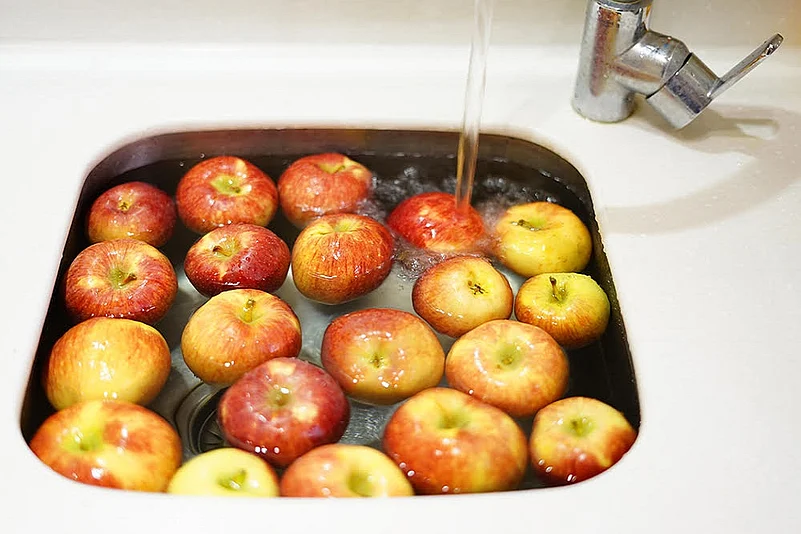A growing body of evidence indicates that access to safe drinking-water, sanitation, and hygiene has an important positive impact on nutrition. Add to that the concept of food safety.
Nutrition does not mean just the food that you eat. It’s also the way it is cooked and preserved. There can be n-number of sources of contamination around you and your food. Microbes invade food products, kitchen surfaces, knives, spoons, ladles and utensils in millions. So it is crucial to understand the key principles of food safety issued by the World Health Organisation, to reduce the risk of food-borne illnesses.
CLEAN: Always wash hands, kitchen surfaces and utensils
♣Personal hygiene should begin at home, covering the essential elements like clean body, clean hair and clean clothing. Hair in food can be a source of both microbiological and physical
contamination. So tie up your hair properly before coming in to the kitchen.
♣ While working, clothing should be kept reasonably clean. Removal of smocks, lab coats or aprons should be a priority when leaving the work area to go to office canteens, restrooms or leaving
the building.
♣Wash your hands with warm water (as bacteria dies in warm water) and soap for at least 20 seconds before and after handling food, after using the bathroom, changing diapers and handling pets
etc.
♣Consider using paper towels/ tissues to clean up kitchen surfaces/ utensils. If you use cloth towels, wash them often in the hot water.
♣Rinse fresh fruits and vegetables under running tap water.

SEPARATE- Avoid cross-contamination
♣Cross-contamination is a process through which bacteria can spread. Improper handling of raw non-vegetarian food can lead to cross-contamination. As a result of this, harmful bacteria can
spread to other food and throughout the kitchen.
♣Use one cutting board for fresh produce and a separate board for raw meat, poultry and seafood items.
♣Never place cooked food on a plate that previously held raw meat, poultry, seafood or eggs.
♣Keep separate sections for perishable and nonperishable items.
COOK- Cook to the optimal internal temperature
Bacteria in food is killed when it reaches a high enough internal temperature. It is recommended to use a food thermometer to measure the internal temperature of cooked foods.
♣Use a food thermometer specifically for cooked meat, poultry and egg dishes, to make sure that the food is cooked to a safe internal temperature.
♣Cook roasts and steaks to a minimum of 145°F / 62°C and maximum to 165°F./ 63.8°F The internal temperature is checked to the innermost part of the thigh and wing and the thickest part of the breast.
♣ Avoid recipes in which eggs remain raw or only partially cooked.
♣Proper thawing of food products before reheating/cooking in order to avoid cold spots in food (where bacteria can survive)
CHILL- Refrigerate promptly
♣Refrigerate or freeze meat, poultry, eggs and other perishables as soon as you get.
♣Never let raw meat, poultry, eggs, cooked food or cut fresh fruits or vegetables sit at room temperature more than two hours.
♣Give a proper blanching process to the food before preserving them.
♣Divide large amounts of leftovers into shallow containers for quicker cooling in the refrigerator. Use small portion in one time preservation.
♣Use or discard refrigerated food on a regular basis in first in first out (FIFO) manner.


























